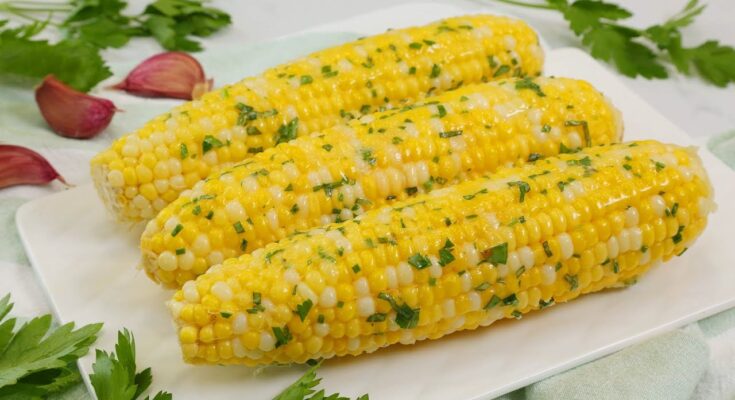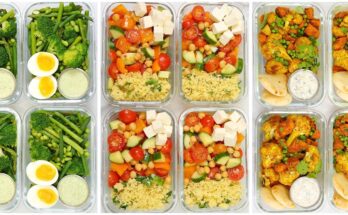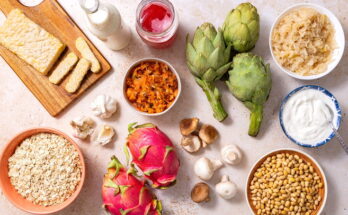Corn on the Cob Recipe: Corn on the cob is one of the quintessential dishes of summer. Whether it’s fresh off the grill or boiled to perfection, it’s a crowd-pleaser that’s easy to make and bursting with flavor. This step-by-step guide will walk you through everything you need to know about preparing delicious corn on the cob, from selecting the best ears to experimenting with different cooking techniques and toppings.
Let’s dive in and explore the secrets to perfecting this classic dish!
Ingredients Needed
To make the perfect corn on the cob, you’ll need the following ingredients and tools:
- Fresh corn on the cob (as many ears as you plan to serve)
- Butter (salted or unsalted, depending on preference)
- Seasonings (salt, pepper, chili powder, garlic powder, etc.)
- Optional toppings: grated cheese, fresh herbs, lime wedges, or flavored butter
- Tools: Large pot, grill, microwave, sharp knife, and kitchen towel
Having everything ready beforehand ensures a smooth cooking process.
Selecting the Best Corn
The first step to a great corn recipe is choosing the freshest ears. Here’s what to look for:
- Husk Color: Go for bright green husks that tightly wrap the ear. Avoid husks that appear dry or brown.
- Silk Condition: The silks (the stringy bits at the top) should be golden and moist, not brittle or overly dry.
- Kernel Plumpness: Gently feel the kernels through the husk—they should be firm and full, without gaps.
- Smell Test: Fresh corn should have a sweet, earthy aroma.
Seasonal corn, typically harvested during late summer, offers the best flavor. Store corn in the refrigerator and cook it within a couple of days for maximum freshness.
Prepping the Corn
Prepping your corn is crucial for a flawless dish. Follow these steps:
Husking the Corn:
- Pull back the green husks in layers, starting at the top.
- Grip the husks firmly and snap them off at the base.
Removing the Silk:
- Use a damp paper towel or a soft-bristle brush to remove all the silk threads.
- Be thorough to avoid bits of silk in your final dish.
Washing:
- Rinse the corn under cold water to remove any remaining dirt or debris.
Once prepped, your corn is ready for cooking!
Cooking Methods
Boiling Corn
Boiling is one of the easiest ways to cook corn on the cob. Here’s how:
- Fill a large pot with water and bring it to a boil.
- Add a pinch of salt (optional).
- Carefully place the corn into the boiling water.
- Cook for 7–10 minutes, depending on how tender you like it.
- Remove the corn with tongs and serve immediately with butter.
Pros: Fast and simple, retains natural sweetness.
Cons: Can lose some nutrients to the water.
Grilling Corn
Grilling corn adds a smoky, charred flavor that’s hard to resist:
- Preheat your grill to medium-high heat.
- Brush the corn with melted butter or oil.
- Place the corn directly on the grill, turning occasionally.
- Grill for about 10–15 minutes, until the kernels are slightly charred.
- Remove from heat and sprinkle with your favorite seasonings.
Tip: Leave some of the husk on for extra moisture and flavor during grilling.
Microwaving Corn
When you’re short on time, the microwave is a lifesaver:
- Place a husked ear of corn on a microwave-safe plate.
- Cover with a damp paper towel.
- Microwave on high for 2–4 minutes per ear.
- Carefully remove the plate (it will be hot!) and let the corn cool for a minute.
Microwaving keeps the kernels juicy and is ideal for quick meals.
Adding Flavor to Corn
Butter and Salt
Nothing beats the classic combination of melted butter and a sprinkle of salt. For extra flair, try garlic or herb-infused butter.
Spices and Herbs
Kick things up a notch with spices like paprika, chili powder, or cumin. Garnish with fresh herbs like cilantro or parsley for a burst of freshness.
Cheese and Toppings
Grated Parmesan, cotija cheese, or a sprinkle of nutritional yeast can elevate your corn to gourmet status. Add a drizzle of lime juice for zing.
Serving Suggestions
Corn on the cob is not just a side dish—it can be the star of your meal! Here’s how to serve it in style:
- Pair with Main Dishes: Corn on the cob complements grilled meats, seafood, or hearty vegetarian dishes like stuffed bell peppers. It’s also a perfect match for summer favorites like barbecue chicken, steak, or burgers.
- Make It a Party Food: Set up a “corn bar” at your next gathering. Provide a variety of toppings like butter, spices, shredded cheese, and fresh herbs so guests can customize their corn.
- Presentation Tips: Serve your corn in a rustic basket lined with a napkin or on a wooden platter. Garnish with lime wedges and a sprinkle of chopped herbs for a pop of color.
Tips for Storing Leftover Corn
If you’ve got leftovers, don’t worry—corn on the cob is easy to store and reuse. Here’s how:
Refrigeration:
- Let the corn cool completely before storing.
- Wrap each ear tightly in plastic wrap or place it in an airtight container.
- Store in the fridge for up to 3–5 days.
Freezing:
- Cut the kernels off the cob and freeze them in a zip-top bag for up to 6 months.
- Alternatively, freeze the whole cob in foil or freezer bags.
Reheating:
- Use a microwave or steamer to reheat the corn. Avoid overcooking, as it can become mushy.
- Grilled corn can be reheated in the oven for a smoky flavor.
Health Benefits of Corn
Corn isn’t just delicious—it’s good for you too! Here’s why you should feel great about enjoying it:
- Rich in Nutrients: Corn is packed with essential vitamins like B6, folate, and vitamin C, as well as minerals like magnesium and potassium.
- High in Fiber: Its high fiber content supports digestion and helps maintain a healthy gut.
- Antioxidants: Corn contains antioxidants like lutein and zeaxanthin, which are great for eye health.
- Low-Calorie Option: If prepared without excess butter or heavy toppings, corn can be a low-calorie and filling side dish.
For a healthier preparation, consider steaming or grilling corn without butter and adding fresh lime juice for flavor.
Common Mistakes to Avoid
Even simple recipes like corn on the cob can go awry if you’re not careful. Avoid these common pitfalls:
- Overcooking: Boiling or grilling for too long can make the kernels tough and chewy. Stick to the recommended cooking times for best results.
- Using Old Corn: Stale corn lacks sweetness and can be dry. Always choose fresh, plump ears.
- Neglecting Seasoning: Season your corn generously, even if you’re keeping it simple with butter and salt.
- Skipping the Prep: Failing to remove all the silk can leave unpleasant strings in your dish. Take your time during the prep stage.
FAQs about Corn on the Cob Recipe
1. How do you pick the best corn for boiling?
Select corn with bright green husks, moist stems, and silky tassels. The kernels should be plump and in tight rows. Squeeze the ear gently; the kernels should feel firm, not soft.
2. What is the best way to cook corn on the cob?
Boiling is the most popular method. Simply bring a large pot of salted water to a boil, add the corn, and let it cook for about 7-10 minutes until tender. You can also grill or microwave it for a smoky flavor or quicker preparation.
3. Should you add anything to the water when boiling corn on the cob?
While plain water is fine, adding a tablespoon of sugar can enhance the corn’s natural sweetness. Some people also add a pinch of salt or a squeeze of lemon for added flavor.
4. How can you tell when corn on the cob is done cooking?
Corn on the cob is done when the kernels are tender and juicy. You can test this by pricking a kernel with a fork. If it bursts easily, it’s ready.
5. What are some popular toppings for corn on the cob?
Butter and salt remain classics, but you can try parmesan cheese, chili powder, or herbs like cilantro. For a twist, brush with mayonnaise and sprinkle with cotija cheese for a Mexican street-style corn.
6. Can corn on the cob be cooked ahead of time?
Yes, you can boil corn ahead of time and then reheat it on a grill or in a microwave when ready to serve. It’s a great way to prepare for barbecues or family gatherings.
7. How long does cooked corn on the cob last in the refrigerator?
Properly stored in a plastic bag or wrapped in foil, cooked corn on the cob can last 3-5 days in the refrigerator. Make sure it’s cooled down before storing.
8. Is corn on the cob healthy?
Absolutely! Corn is a good source of fiber, vitamins C and B, and essential minerals. It’s also relatively low in fat and can be a healthy part of any meal, especially when cooked without excessive butter or salt.
9. Can you freeze corn on the cob?
Yes, to freeze, blanch the corn in hot water for a few minutes, then cool it in ice water. Dry the cobs and wrap them individually in plastic wrap or aluminum foil before freezing. They can last up to a year frozen.
Conclusion
Corn on the cob is a simple yet satisfying dish that deserves a place at your table. With its variety of cooking methods, flavor combinations, and nutritional benefits, it’s a dish that’s as versatile as it is delicious. Whether you’re boiling, grilling, or microwaving, the key is to use fresh corn and get creative with your toppings.
So, gather your ingredients, fire up the grill or stove, and enjoy the sweet, juicy taste of perfectly cooked corn on the cob. Happy cooking!



